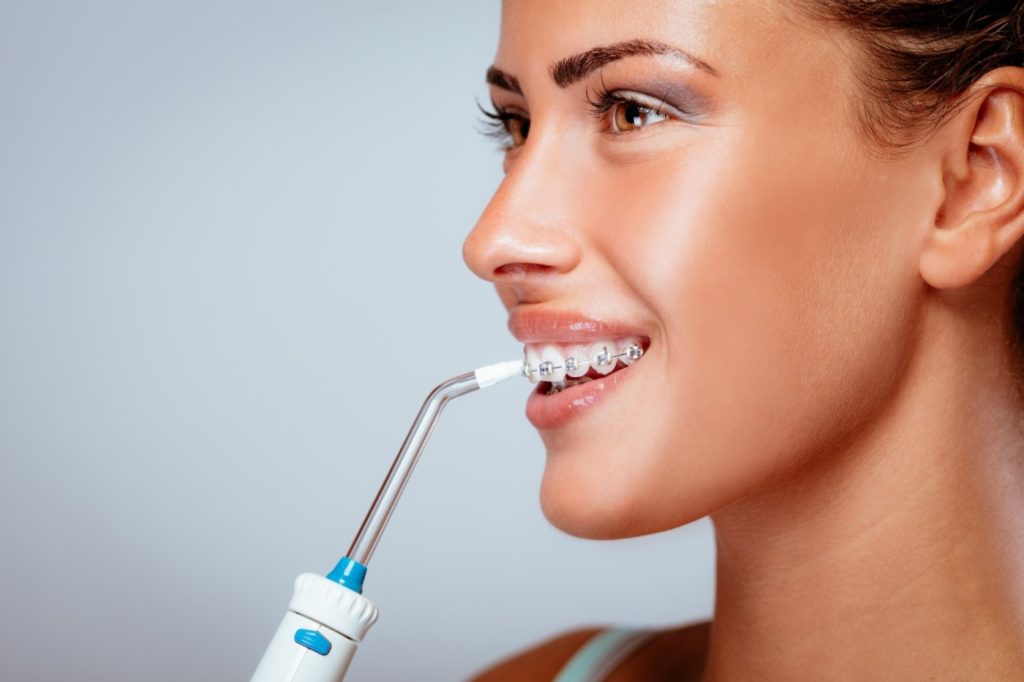As an orthodontic patient, you play a key part in the success of your treatment. A beautifully aligned smile and improved oral health at the end of the orthodontic process is the result of a team effort that includes you, the team here at Shaw Orthodontics, and your family dentist. One of the most crucial elements of braces care is a good oral hygiene routine. In order to get the best results from orthodontic treatment, you must keep your teeth and gums clean, healthy, and free from plaque and bacteria. Although proper dental care takes a little extra time and effort, the end result will be more than worth it! Let’s take a look at the best way to care for your braces, and how this will help you achieve a smile you can be proud of.
What is plaque, and why should you avoid it?
Plaque is a sticky, colorless film composed of bacteria, food, and saliva. It collects on your teeth if it is not brushed or rinsed away. Plaque and trapped food that are left on your teeth and around your braces can lead to a number of oral issues, such as:
Increased risk for cavities and decalcification
The bacteria in plaque can react with the sugars and starches in food and form acid that eats away at the enamel on your teeth, causing white marks on the teeth, cavities, or gum disease.
If plaque is allowed to accumulate around your braces, it can leave stains on your teeth called decalcification. The lines and spots from decalcification are permanent.
Periodontal disease
Periodontal disease, also called gum disease, is caused by the buildup of plaque on the teeth and occurs in three stages.
The first stage is gingivitis, and occurs when plaque accumulation begins to irritate the gums. In response, they may be puffy, swollen, or bleed slightly when you brush or floss.
Left untreated, the buildup of plaque can harden into a substance called tartar. As tartar accumulates, gaps or pockets may form between your gums and teeth, allowing even more tartar to collect in these pockets. This vicious circle is the second stage of periodontal disease, called periodontitis.
Eventually, pockets of bacteria can form and deepen beneath your gums, attacking and ultimately destroying the bone that anchors your teeth. This advanced periodontitis can cause even healthy teeth to loosen or fall out, and is the third (and most serious) stage of gum disease.
With professional help and good follow-up care at home, early gum disease is usually reversible. On the flip side, ignoring it can make it worse. Because gum disease is often painless, you will need to pay attention to any known signs of it, such as bleeding, swollen, or puffy gums. By carefully following Dr. Shaw’s directions on how to care for your braces, you’ll help keep plaque, bacteria, and tooth decay at bay.

The best oral hygiene for braces
While excellent oral hygiene is a key factor for all of us in preventing common dental problems it becomes especially important when you are undergoing orthodontic treatment like braces. This can be complicated by the brackets, wires, and bands, which can trap food debris and make cleaning your teeth and gums effectively a bit of a challenge, particularly in the early days. Yet without the proper care and attention, dental issues can develop.
Many of these issues are frustrating enough to deal with on their own, but they can also cause secondary oral health issues if they are left untreated. This can extend the total time spent in braces. In more serious cases, your braces may need to be removed while we wait for any mouth and gum issues to be resolved before continuing your treatment. To avoid extending or delaying your treatment, incorporate the following tips into your daily oral hygiene routine.
Brushing with braces
After you have braces put on, you’ll often find a need to adjust both the way you brush your teeth and how often you do it. You should be brushing your teeth after every meal, and preferably after every snack. Brushing 3-4 times every day for at least two minutes each time will help to keep food particles and plaque from getting a foothold in your braces and teeth. To correctly brush teeth with braces, you should:
- Hold the toothbrush parallel to the floor against the side of the teeth, and begin moving the toothbrush in small circular motions, following the regular curve of the gums and teeth as you go from tooth to tooth.
- Brush each tooth for several seconds, carefully and slowly. Take special care to remove any food particles along the gum line, between the braces, and on the surface of each tooth.
- Remember to brush the tops of teeth and insides of your teeth, the back of your mouth, and behind the molars. Brush upward on the lower teeth and downward on the upper teeth, and brush the roof of your mouth and tongue before rinsing.
- To properly clean the brackets, angle the brush head against them, and be sure to brush thoroughly under the wires as well!
Flossing with braces
Flossing is nobody’s favorite task, and it can be tricky at the best of times. It has an even bigger learning curve when you’re wearing braces, but it’s incredibly important to do it every night throughout the orthodontic process. Even if it seems like all remnants of food have been brushed away, your braces can easily trap food in places that are hard to see and reach. To correctly floss with braces:
- Slide a piece of floss about 18 inches long under the wire, above the space between the two teeth. Insert the floss halfway through, and then hold both ends of the floss. Carefully slide the floss up and down a few times between the teeth. You’ll hear a slight squeaking sound when it’s thoroughly clean.
- Floss the gum line with the floss in the shape of a “C,” and below the gum line with a soft up and down motion. Be careful not to apply too much pressure when flossing around the archwire.
- Gently remove the floss, threading it under the next wire, and repeating the steps above.
The whole flossing process may take up to 20 minutes in the beginning, but your speed will increase with practice. While flossing with braces can be challenging, there are products designed to make it an easier process. One example of this is “threader floss,” which has a stiff end that permits flossing between brackets. Another is the orthopick, a sturdy flosser that easily slides between your teeth and the bracket wire, removing debris and keeping your smile fresh and clean.
Toothbrushes, toothpastes, and mouthwash
When you are a braces patient, a toothbrush with soft bristles tends to be best. No matter how thorough you are, a manual toothbrush can sometimes leave food particles and plaque behind, so we recommend you use an electric toothbrush for the extra cleaning power it provides.
When it comes to toothpaste, there’s not a specific type needed for brushing with braces. We do suggest you use a fluoride toothpaste, and use mouthwash daily to rinse around your brackets. Swishing and rinsing with mouthwash help to clean the tiny spaces in between your teeth, where food particles tend to get trapped if they’re missed during brushing and flossing.
In addition to these common dental hygiene tools we’re all familiar with, there are a few products we can recommend that will make maintaining an excellent oral hygiene routine a cinch.
Interproximal brush: This tool looks a bit like a tiny pipe cleaner, and is able to slip under your archwire to more completely remove plaque and food particles near your brackets.
Prescription fluoride toothpaste or fluoride rinse: To deliver maximum fluoride protecting to strengthen and protect your teeth, ask Dr. Shaw about prescribing one or both of these.
Electric toothbrush or oral irrigator: These devices offer more power and better reach, making brushing easier and much more efficient.

Keep your braces their best with Shaw Orthodontics
You’ve taken the big step of having braces put on, and are on the path towards a healthy, beautiful, straight smile. It’s an exciting time, but we know it can also come with its own set of challenges. As you get used to your braces, you’ll probably find yourself having to make a few adjustments as you go, but caring for them successfully will become second nature before you know it!
Our talented team is here to help make the orthodontic process as stress-free and rewarding as possible for you. If you’re in Rockwall, Watauga, or the surrounding areas and have questions or concerns about caring for your braces, get in touch with us and we’ll do all we can to set your mind at ease. Your happiness and confidence in your treatment are as important to us as giving you a gorgeous smile!

